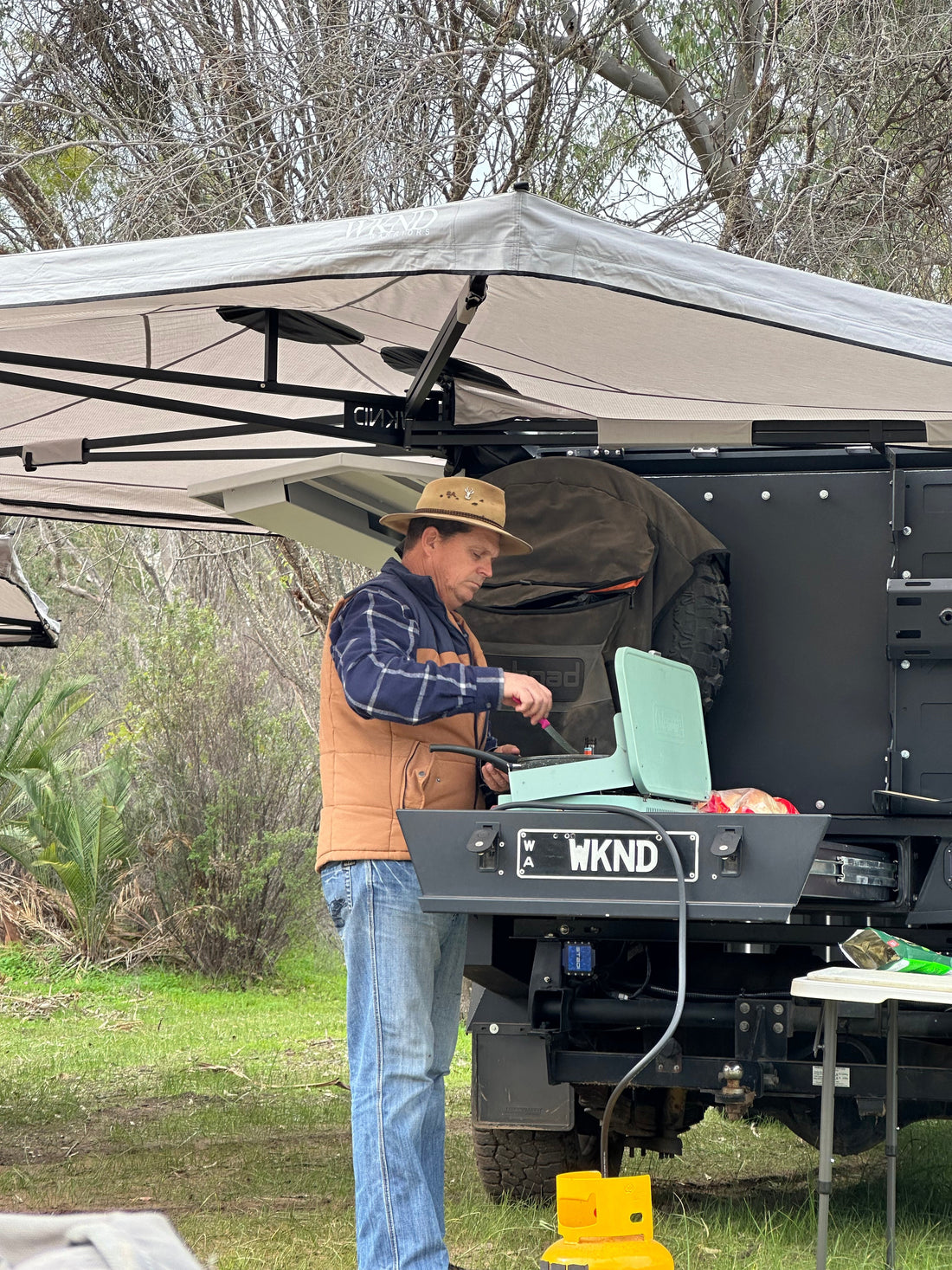Remote Touring: How to Get Food & Water Supplies Right
If you’re heading off the grid, your food and water setup is one of the most important parts of the trip. It’s not just about comfort—it’s about safety, and having the right supplies can be the difference between a good trip and a bad one. Here's how I plan, pack, and prepare for extended time away from civilisation.
1. How Much Food and Water Do You Actually Need?
The further you get from reliable resupply points, the more self-reliant you need to be. Start by working out your daily water needs. I usually allow:
- 4–5 litres of water per person per day for drinking and cooking.
- Multiply by 5 if you plan to shower.
For food, I plan three meals a day plus snacks, then multiply that by how many days I’ll be away. Whatever the final number is, I always add 20% extra to allow for delays or changes in plans.
Before any trip, look at how far the next supply point is and whether it’s reliable all year round. Some places close or run dry seasonally. Plan, test, plan again.
2. Key Things to Consider When Planning Supplies
The basics to factor in:
- Number of people
- Trip length
- Storage capacity of your setup
- Reliability of catching your own food (e.g., coastal vs inland)
If I’m near the coast, I know I can usually catch fresh protein. But if I’m out on something like the Anne Beadell Highway, I know I’ll need to carry everything.
Dry and canned goods are the backbone of longer trips. I always bring rice, oats, and grains—they store well and keep you full.
3. How Environment & Terrain Change Your Needs
Your environment changes how much you need.
- Hotter regions (north): You’ll burn through water quickly, especially if you’re on the move or working hard.
- Colder areas (south): You’ll want heartier meals—soups, stews, and warm food go a long way in bad weather.
Either way, plan for worst-case scenarios, not best-case assumptions.
4. What Food to Bring (That Actually Lasts)
If you’ve got a freezer, you can bring more variety. I pack vacuum-sealed meals I can defrost and heat. But I also always carry non-perishables for backup. These are my go-to’s:
- Dried fruit
- Nuts
- Jerky
- Canned beans, tuna, tomatoes
- Pasta, rice, oats
- Long-life milk or powdered alternatives
And don’t forget spices and sauces. When food starts to get repetitive, they go a long way in keeping meals enjoyable.
5. Water Storage & Safety Tips
Store water in BPA-free containers, with a mix of:
- Small bottles for daily use
- Larger jerry cans for backup supply
I don’t refill from natural water sources. Even with boiling or tablets, you’re still risking contamination—and nothing ruins a trip faster than dehydration from dodgy water.
✅ Keep water split across multiple containers, so one failure doesn’t cost you your whole supply.
✅ Have a backup plan—at least one other way to purify water if needed.
✅ Research refill points before you leave.
6. Planning for Emergencies
This is a non-negotiable.
- Always pack at least 3 days of backup food and 5–10L of extra water per person.
- These extras can be basic—oats, instant rice, tinned meals.
- Let someone know your route and expected return time.
- Carry a satellite phone or Personal Locator Beacon (PLB).
Getting stuck happens. Having extra gives you breathing room.
7. Cooking & Storage Gear to Always Bring
You don’t need a full kitchen—just solid basics that won’t let you down:
- Portable stove + gas
- Small pot and frypan
- Freezer (or fridge/freezer combo)
- Cooking utensils + knife + cutting board
- Airtight containers
- Zip-lock bags (they’re more useful than you'd think)
- Purification tablets or backup filter
8. Keeping Food & Water Safe on the Road
- Store dry food in sealed, waterproof containers
- Check best-before dates before packing, and rotate stock—oldest stuff gets eaten first
- Avoid storing water containers in direct sun
- Regularly check seals on food and water storage
- If in doubt, re-treat water before using
Pests, heat, and time can ruin supplies fast if you’re not careful.
9. What to Do If You Run Out
If something goes wrong and you run out of supplies:
- Do not leave your vehicle.
- Use maps and nav gear to identify the nearest town or community.
- Stay calm and ration what’s left.
- Reduce activity to minimise water loss.
- Use your sat phone or PLB to call for help if you’re remote.
Panic and overexertion make things worse. Have a plan and stick to it.
Final Thoughts
Planning your food and water isn’t just a checklist—it’s the backbone of safe and comfortable remote travel. Once you’ve got it dialled in, it gives you the confidence to go further, stay longer, and enjoy the trip properly. Think ahead, pack smart, and always allow for the unexpected.

